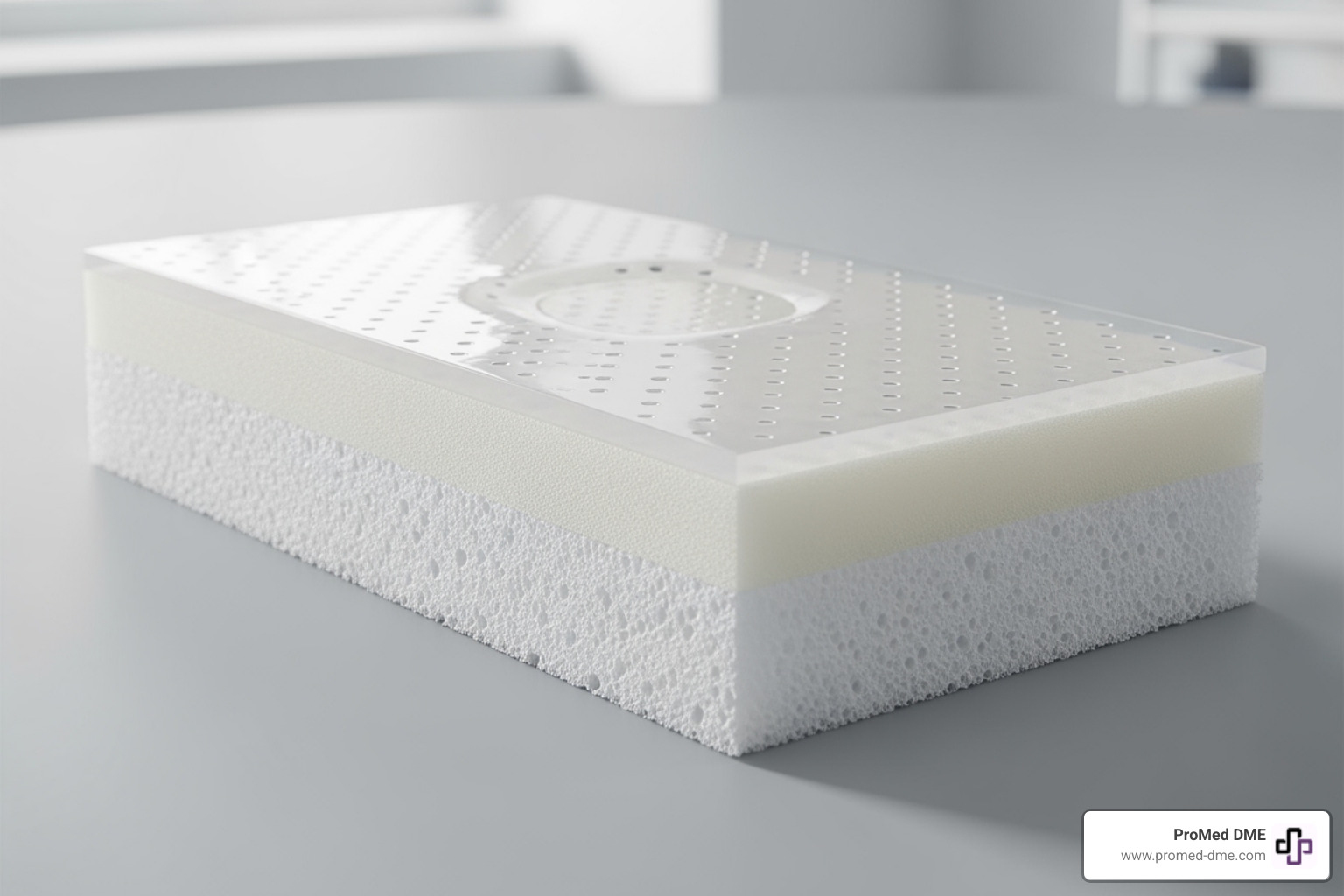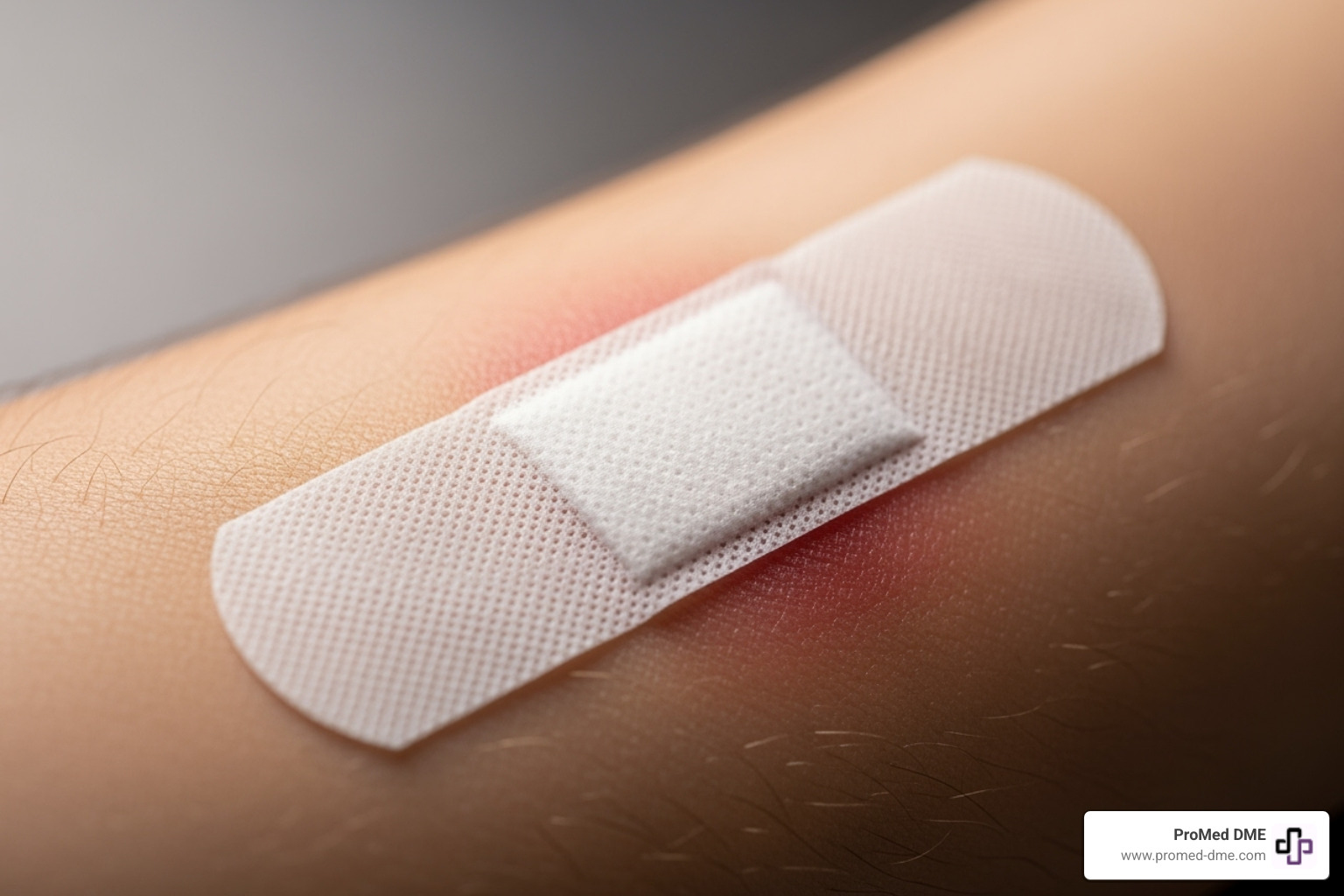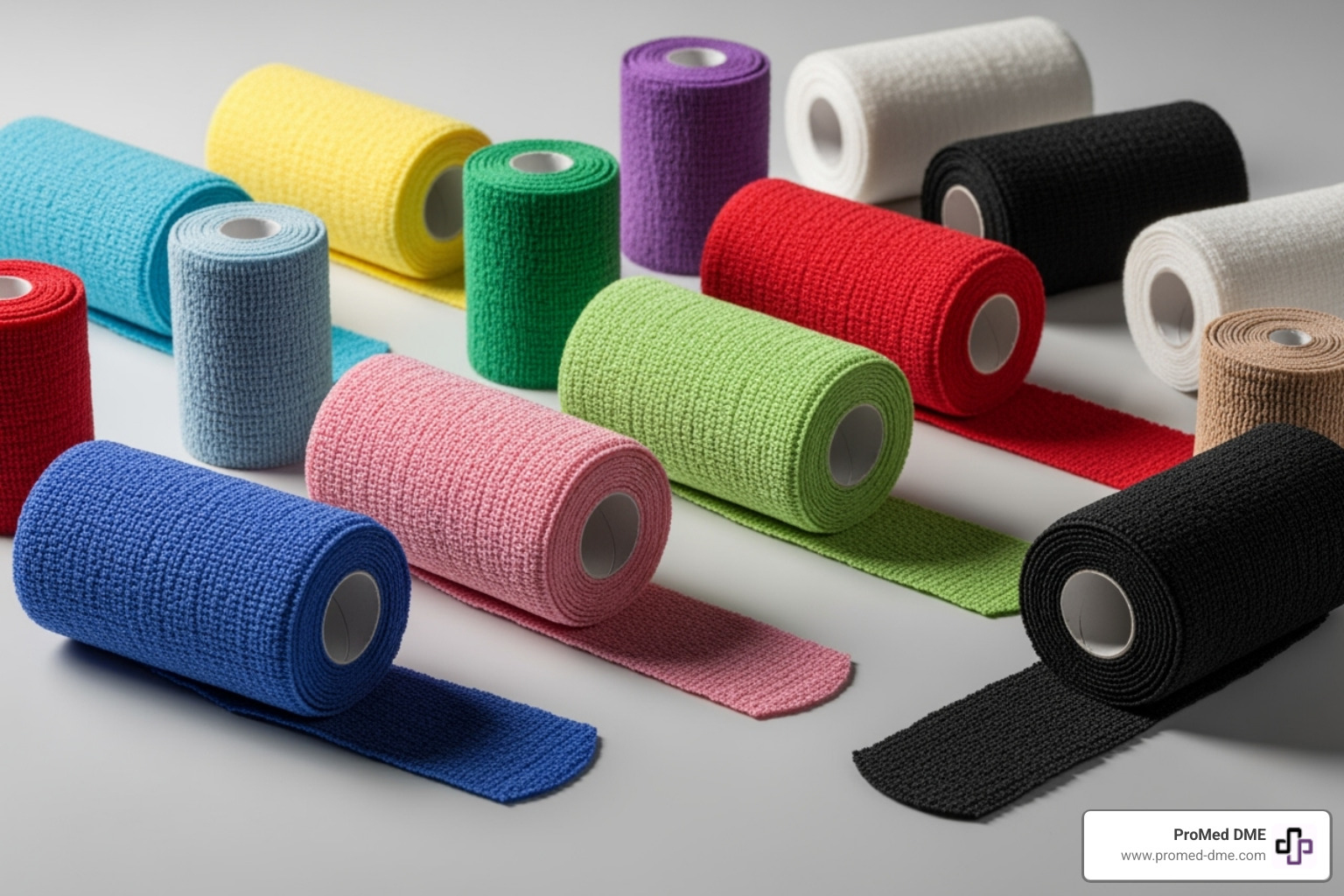Bandaging Infected Wounds: A Step-by-Step Guide

When considering whether to do bandage infected wound, it's crucial to prioritize proper care to prevent further complications. Here's what you need to know:
- Recognize the Signs: Look for signs like increasing redness, swelling, or pus.
- Seek Treatment: Clean the wound and consult healthcare professionals about appropriate bandaging techniques.
- Cover and Protect: Bandaging can help keep the wound clean and prevent additional infection.
Wound infections are a common concern, especially for those with chronic health conditions or in retirement age. If left untreated, an infected wound can lead to more serious issues like sepsis. Recognizing signs of an infected wound is the first step. These may include pain, excess swelling, and redness spreading from the site.
Treating an infected wound involves cleaning it properly, applying antiseptic creams, and often using the right type of bandage to aid healing and prevent further infection. In some cases, professional medical attention is necessary to ensure the infection does not worsen.
These simple steps can play a key role in effective wound management.

Simple do bandage infected wound glossary:- alginate wound dressing- mepilex dressing
Do Bandage Infected Wound: Why and When
Bandaging an infected wound is more than just a protective measure—it's a crucial step in promoting healing and preventing further complications. Here's why and when you should do bandage infected wound:
Why Keep Wounds Covered?
Prevent Further Infection:
Covering an infected wound acts as a barrier against bacteria and other pathogens from the environment. This is especially important in open wounds, where germs can easily enter and cause further issues.Moisture Retention:
Keeping the wound moist is essential for healing. A moist environment can help cells regenerate faster and reduce the risk of scabbing, which can slow down the healing process.

When to Bandage an Infected Wound
Visible Signs of Infection:
If you notice signs like redness, warmth, swelling, or pus, it's time to bandage the wound. These are indicators that the wound is infected and needs protection.After Cleaning and Treatment:
Always clean the wound thoroughly before applying a bandage. Use gentle soap and water, and consider applying an antiseptic cream to reduce bacteria.In High-Risk Situations:
For wounds in areas that are prone to dirt or friction, such as hands or feet, bandaging is essential. It not only protects the wound but also helps in retaining the moisture necessary for healing.
Choosing the Right Bandage
Different types of bandages serve various purposes. For infected wounds, sterile gauze or hydrogel dressings are often recommended. These options provide a clean environment and absorb any excess fluid.
Keeping an infected wound covered is a simple yet effective way to support healing and prevent complications. Always pay attention to how the wound responds and adjust care as needed.
Next, we'll explore the proper techniques for cleaning an infected wound to ensure it heals effectively.
How to Properly Clean an Infected Wound
Cleaning an infected wound is the first step in helping it heal. Proper cleaning removes bacteria and debris, reducing the risk of further infection. Here's a simple guide to ensure you're doing it right:
Step-by-Step Cleaning Process
Wash Your Hands:
Start by washing your hands thoroughly with soap and warm water. This prevents you from introducing new germs to the wound.Rinse the Wound:
Hold the wound under running tap water. This helps flush out dirt and bacteria. Avoid using harsh chemicals like hydrogen peroxide, which can damage healthy skin cells and delay healing.Use Soap and Water:
Clean the skin around the wound with mild soap and water. Be careful not to get soap directly in the wound as it can irritate the tissue.Inspect for Debris:
Check the wound for any dirt or debris. If you see any, use sterilized tweezers to carefully remove it. Debris can prevent the wound from healing properly and may lead to further infection.Apply Antiseptic:
Use an antiseptic solution or wash to cleanse the wound gently. Products like saline solution are effective and gentle on the skin. They help reduce bacteria without harming the tissue.Pat Dry:
Gently pat the wound and surrounding area dry with a clean towel. Make sure the area is completely dry before moving on to the next steps.
Antiseptic Use
Antiseptics are crucial in cleaning infected wounds. They help eliminate bacteria and create a clean environment for healing. Use them sparingly, as overuse can irritate the skin. Always follow the instructions on the product label for best results.
Debris Removal
Removing debris is essential. Even small particles can harbor bacteria and slow down healing. If you're unsure about removing debris yourself, seek medical advice. In cases where the debris is deeply embedded, professional help may be necessary.
Proper cleaning sets the stage for effective wound healing. Once the wound is clean, it's important to apply a bandage to protect it and maintain a moist environment for recovery.
Next, we'll discuss how to apply a bandage to an infected wound, including tips on choosing the right type and ensuring effective dressing changes.
Applying a Bandage to an Infected Wound
After cleaning an infected wound, the next essential step is applying a bandage. This helps protect the wound, keeps it moist, and prevents further infection. Let's explore the details of using antibiotic ointment, choosing the right bandage types, and managing dressing changes effectively.
Antibiotic Ointment
Before bandaging, applying an antibiotic ointment can be beneficial. These ointments, like NEOSPORIN®, help prevent infection by killing bacteria. They also keep the wound moist, which is crucial for faster healing. Here's how to use it:
Apply a Thin Layer:
Use a clean finger or a cotton swab to apply a thin layer of ointment directly to the wound. Avoid using too much, as it can cause skin irritation.Cover the Entire Wound:
Ensure the ointment covers the entire surface of the wound. This creates a protective barrier against bacteria.Reapply with Each Dressing Change:
Reapply the ointment every time you change the bandage to maintain its protective effects.
Bandage Types
Choosing the right bandage is crucial for effective wound care. Here are some common options:
Gauze Bandages:
Ideal for wounds that need airflow. Secure with medical tape, ensuring it's not too tight.Hydrogel Dressings:
Best for dry or slightly oozing wounds. They provide moisture and can be left on for several days.Foam Dressings:
Suitable for wounds with moderate exudate. They absorb excess fluid and keep the wound dry.Transparent Films:
These are useful for monitoring the wound without removing the dressing. They also offer a waterproof barrier.
Dressing Changes
Regular dressing changes are vital to prevent infection and monitor healing. Here’s how to manage them:
Frequency:
Change gauze bandages daily or whenever they become wet or dirty. Hydrogel and foam dressings can often stay on for a few days, depending on the wound's condition.Signs for Immediate Change:
If you notice increased redness, swelling, or a foul odor, it's time to change the dressing immediately.Proper Technique:
Always wash your hands before and after changing a bandage. Remove the old dressing gently to avoid disturbing the healing tissue. Clean the wound again if necessary, reapply antibiotic ointment, and secure a new bandage.
By applying a bandage correctly, you create an optimal environment for healing. This step not only protects the wound but also supports the body's natural healing process.
In the next section, we’ll explore advanced wound care techniques, including innovative options like smart bandages and mHealth technology.
Advanced Wound Care Techniques
In wound care, technology is making big strides. From smart bandages to mHealth technology, advanced techniques are changing how we manage infected wounds. Let's explore these innovations and how they can improve healing.
Smart Bandages
Smart bandages are a game-changer in wound care. These bandages come with sensors that monitor the wound's condition. They can track vital signs like temperature, pH levels, and moisture, giving real-time updates on the healing process.
Remote Monitoring:
Early Detection:
By providing continuous data, smart bandages can alert healthcare providers to potential issues before they become serious, ensuring timely interventions.
Electric Bandages
Electric bandages are another innovative option. They use electrical currents to stimulate healing in the wound. This can be particularly beneficial for chronic wounds that are slow to heal.
Promotes Healing:
The electrical current can accelerate the body's natural healing processes, helping wounds close faster and reducing the risk of infection.Pain Management:
Some electric bandages also include features that help manage pain, making the healing process more comfortable for patients.
mHealth Technology
Mobile health, or mHealth technology, is revolutionizing patient care by integrating technology into everyday healthcare practices.
Mobile Apps:
Apps can now offer guidance on wound care, remind patients when to change dressings, and even connect them with healthcare professionals for virtual consultations.Data Collection:
mHealth tools can collect data on the wound's progress and share it with doctors, allowing for more personalized and effective treatment plans.
By incorporating these advanced wound care techniques, patients can experience faster healing and better outcomes. The future of wound care is bright, with technology leading the way to more efficient and effective treatments.
In the next section, we'll dive into some frequently asked questions about bandaging infected wounds, covering key topics like whether to keep wounds covered and how to draw out infections.
Frequently Asked Questions about Bandaging Infected Wounds
Should you bandage an infected wound?
Absolutely, bandaging an infected wound is crucial for several reasons. Keeping the wound covered:
Prevents Further Infection:
A bandage acts as a barrier against dirt, bacteria, and other external contaminants that can worsen the infection.Promotes Moisture Retention:
Covering the wound helps maintain a moist environment, which is essential for faster healing. Contrary to popular belief, wounds heal better when moist rather than dry.
Is it better to keep an infected wound covered or open?
Keeping an infected wound covered is generally the best practice. Here's why:
Infection Prevention:
An open wound is more susceptible to external bacteria. Covering it reduces the risk of new infections.Moisture Retention:
A moist environment accelerates the healing process. It aids in cell growth and reduces scarring.
While some minor cuts might benefit from brief exposure to air, infected wounds should remain covered to support healing and prevent further complications.
What will draw infection out of a wound?
To draw infection out of a wound, consider these options:
Antibiotic Ointment:
Applying an antibiotic ointment can help combat bacteria directly at the site of infection. This can be particularly effective for minor infections.Saline Solution:
Rinsing the wound with a saline solution is a gentle way to clean it. Saline helps flush out debris and bacteria without irritating the tissue.
In more severe cases, medical intervention may be necessary. Always consult a healthcare professional if an infection persists or worsens.

By following these guidelines, you can effectively manage infected wounds and promote faster recovery. In the next section, we will dig into the conclusion, highlighting ProMed DME's commitment to providing top-quality wound care products and exceptional customer service.
Conclusion
At ProMed DME, we are dedicated to supporting your journey toward healing with our comprehensive range of wound care products. Our wound care supplies are designed to help you manage infected wounds effectively, ensuring that you have the right tools to promote healing and prevent further complications.
Our Commitment to Quality and Service
Top-Quality Products:
We offer a wide selection of durable medical supplies, including bandages, antiseptics, and advanced wound care solutions. Our products are carefully curated to meet the highest standards, ensuring that you receive reliable and effective care.
Exceptional Customer Service:
At ProMed DME, we believe that great products deserve great service. Our dedicated team, including a nurse on staff, is here to provide guidance and answer any questions you may have. We work with most insurance plans to help minimize your out-of-pocket expenses, making quality care accessible.
Convenient Shipping:
Located in Stuart, Florida, we ship across the United States, offering free shipping to ensure you receive your supplies quickly and efficiently. Our goal is to make the process as smooth and hassle-free as possible.
Your Partner in Wound Care
Whether you're dealing with a minor scrape or a more complex wound, ProMed DME is here to support you every step of the way. Our expertise and resources are at your disposal to help you achieve the best possible outcomes for your wound care needs.
Thank you for choosing ProMed DME as your trusted partner in wound care. We are committed to helping you heal safely and effectively, with products and services that improve your health and well-being.
Related Resources & Articles
Stay informed with our informative blog posts.
Discover the ProMed Advantage
& Try Our Products
We offer free shipping and legendary customer service to ensure you receive the
best DME products for your needs.



